If you’ve found yourself on this page of our site, it’s because you have questions about the type of paper to use for your upcoming print job. And we’re here to help!
When choosing the right paper weight for your needs, it’s important to consider the type of print job, your audience, whether you want stiffer or more flexible paper, and if you want the paper to have a coating, such as gloss. Answering these questions before purchasing helps ensure the job prints to your satisfaction.
Paper comes in many different varieties making it resourceful and functional for creative print jobs. But while the fact that paper is so versatile, it can also make it misunderstood. Choosing a type of paper for your print job can be the hardest part of the whole print process. There’s type, size, weight, and finish to consider, and if you’re unfamiliar with the products the process becomes somewhat overwhelming.
That’s why we’ve put together this helpful guide to help make the whole process less stressful.
Let’s start with how paper is categorized.
In the USA, the basis weight method is based on a measurement of the weight of 500 sheets of paper size in its uncut form. For an example, let’s say that an uncut sheet of bond paper is 17 x 22 inches before it’s cut to letter size paper. If 500 sheets of the bond paper in its original form weighs 20 pounds, then the paper is labeled “20lb” after it’s cut to letter size. An example of this type of paper in our selection is the 100# Cover Uncoated.
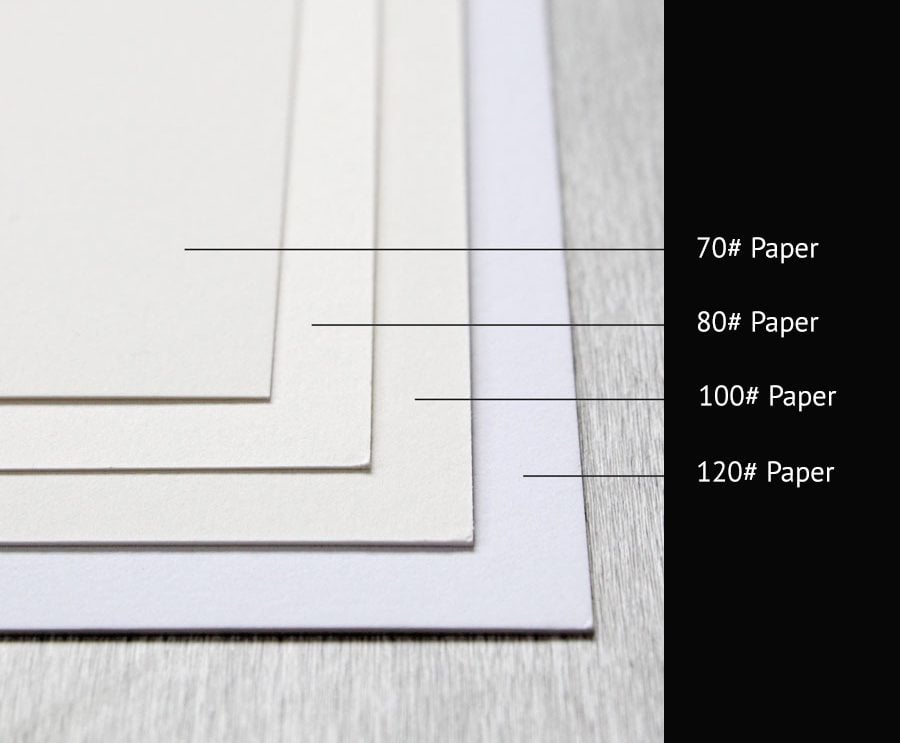
As you can see, these measurements can be hard to understand. If you’re confused, it’s okay! Since a higher value doesn’t necessarily match with a heavier paper and there isn’t a standard size for uncut paper, it can be hard to compare the different weights. And since two papers can share the same basis weight with each other, but still have different characteristics, even more confusion can ensue. Because of this kind of confusion, most reams of paper list measurements along with US basis weight.
Using the metric weight way of measuring is a lot simpler. This method involves using a caliper (a device used to measure the distance between two opposite sides of an object) to find the exact thickness of a piece of paper. The caliper can give a measurement within a thousandth of an inch. In this case, the weight is judged by the thickness of the paper. The thicker the paper, the higher the paper weight. Paper is listed by pt (point). For example: 10pt Cover Coated 1 Side.
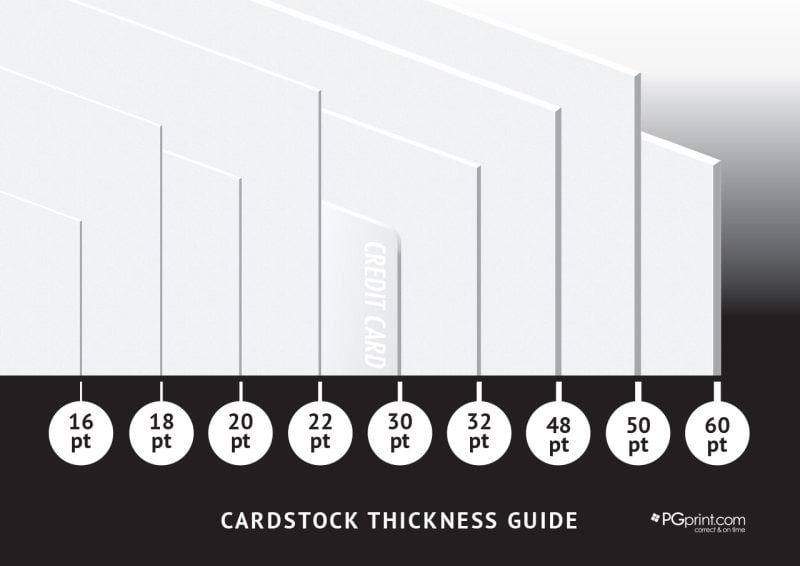
Here we have a list of the paper that PGprint currently offers our customers along with examples of when to use the types of paper. We also offer many other custom paper types that may not be listed below for custom requests.
• Appleton Superior NCR:
○ Common Uses:
- Invoices
- Carbonless Forms
○ Available in:
- 2 part (white/canary)
- 3 part (white/canary/pink)
- 4 part (white/canary/pink/gold)
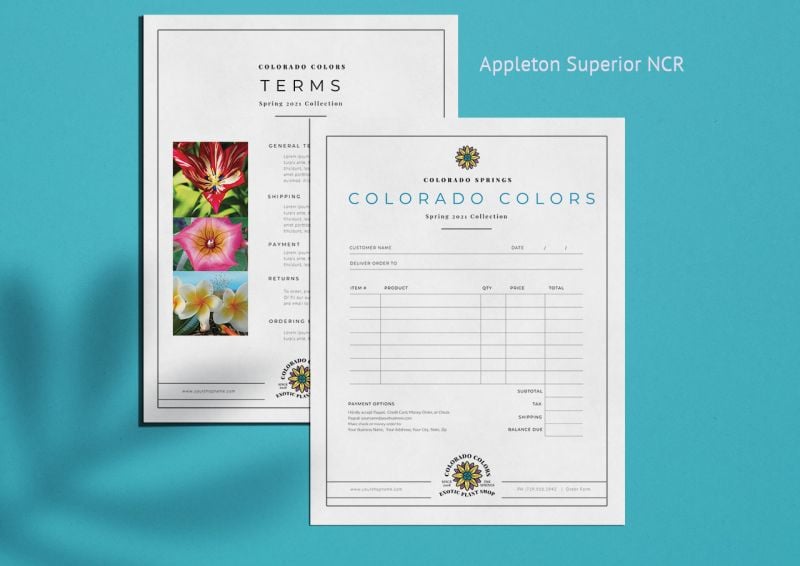
• 24# Classic Crest:
○ Common Uses:
- Letterhead
- Sell Sheets
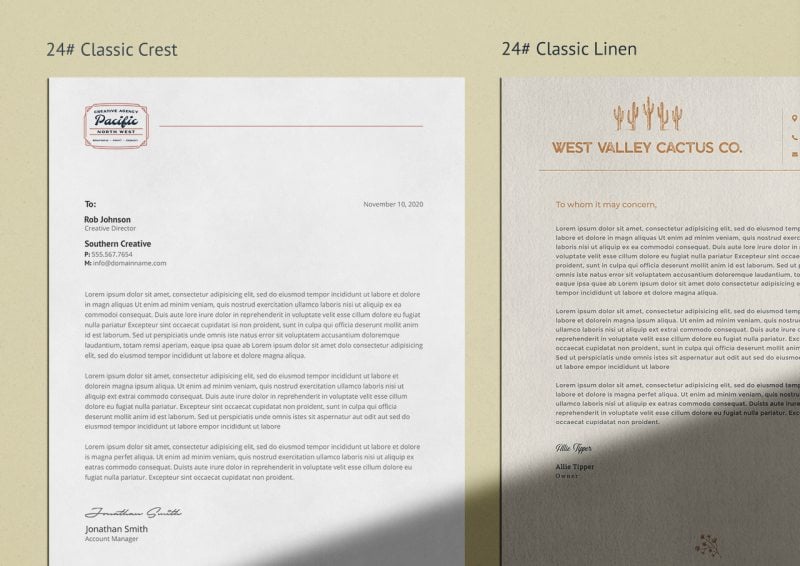
• 24# Classic Linen:
○ Common Uses:
- Letterhead
- Sell Sheets
• 70# Text Uncoated:
This is ultra-premium uncoated (non-glossy) white stock is guaranteed safe for laser printing. It feels thick and substantial in your hands and is the best type of uncoated paper stock available for full-color printing.
○ Common Uses:
- Booklets
- Catalogs
- Double Parallel Fold Brochures
- Envelopes
- Flyers
- Letterhead
- Notepads
- Placemats
• 80# Text Gloss:
Standard glossy paper provides an excellent opaque base for rich process color printing. Think of the thickness of a quality magazine page. A standard glossy paper like this provides an excellent opaque base for rich process color printing.
○ Common Uses:
- Booklets
- Brochures
- Buckslips
- Catalogs
- Flyers
- Menus
- Sell Sheets
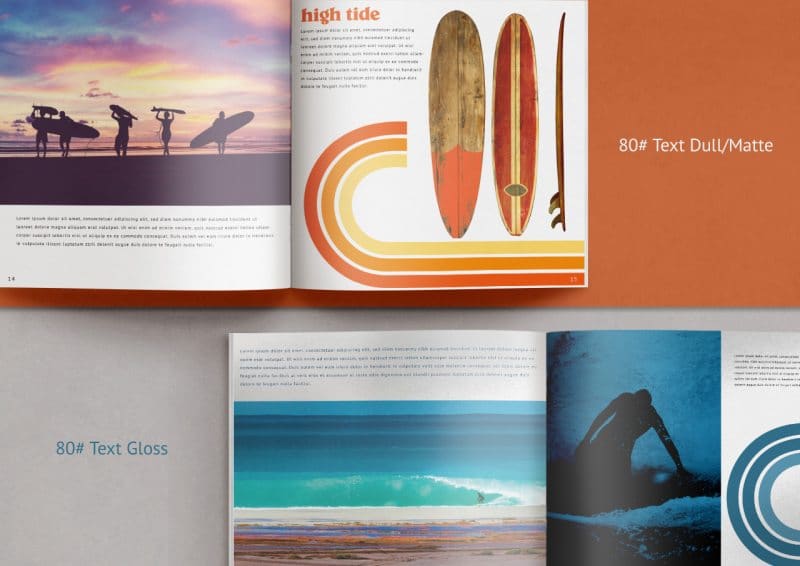
• 80# Text Dull/Matte:
This stock is finely coated with a satin finish. It provides an excellent opaque base for easy to read, crisp typography.
○ Common Uses:
- Booklets
- Brochures
- Buckslips
- Catalogs
- Flyers
- Menus
• 80# Cover Gloss:
This stock is the thickness of a postcard and coated with a glossy finish, making photographs and other images look beautiful.
○ Common Uses:
- Booklets
- Brochures
- Buckslips
- Catalogs
- Club Flyers
- Flyers
- Sell Sheets
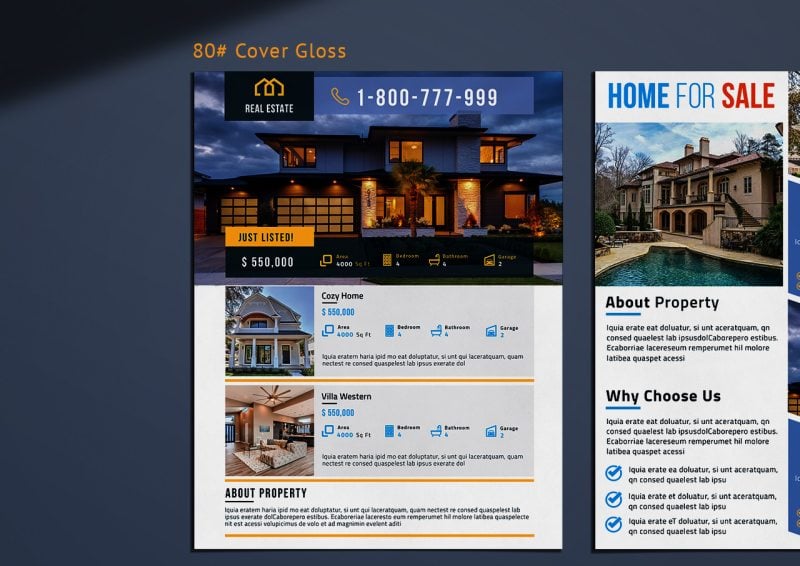
• 80# Cover Dull/Matte:
Like the Gloss coat, the Matte cover is as thick as a postcard or baseball card with a non-shiny coating that makes it suited for detailed, crisp printing with the ability to write on it.
○ Common Uses:
- Booklets
- Brochures
- Buckslips
- Catalogs
- Club Flyers
- Flyers
- Menus
- Sell Sheets
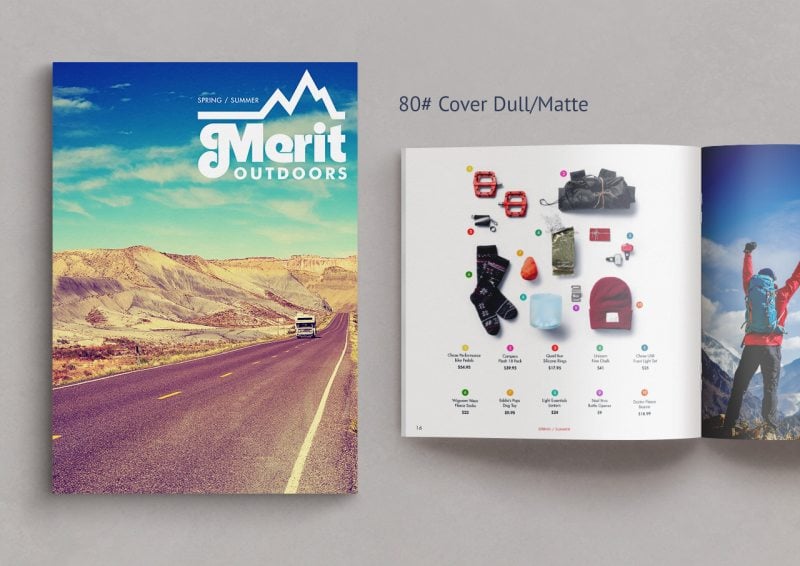
• 100# Text Gloss:
This stock is 25% thicker and heavier than the 80# gloss text and is for a more substantial feeling piece.
○ Common Uses:
- Blu Ray Case Covers
- Booklets
- Brochures
- Buckslips
- Bulk Posters
- Catalogs
- CDs / DVDs
- Flyers
- Menus
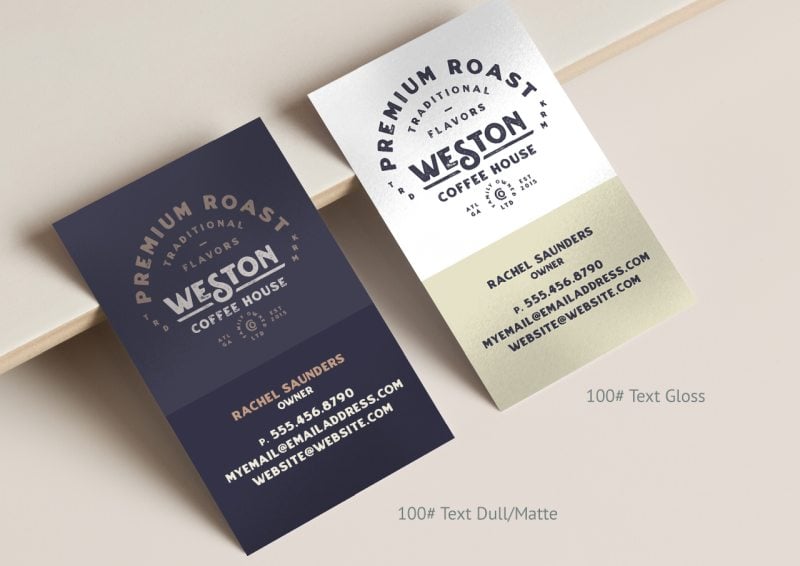
• 100# Text Dull/Matte:
Thicker and heavier than our 80# Matte Text for a more substantial feeling piece. This provides a non-glossy, opaque base for detailed, crisp printing.
○ Common Uses:
- Booklets
- Brochures
- Buck Slips
- Catalogs
- Flyers
- Menus
- Sell Sheets
- Tickets
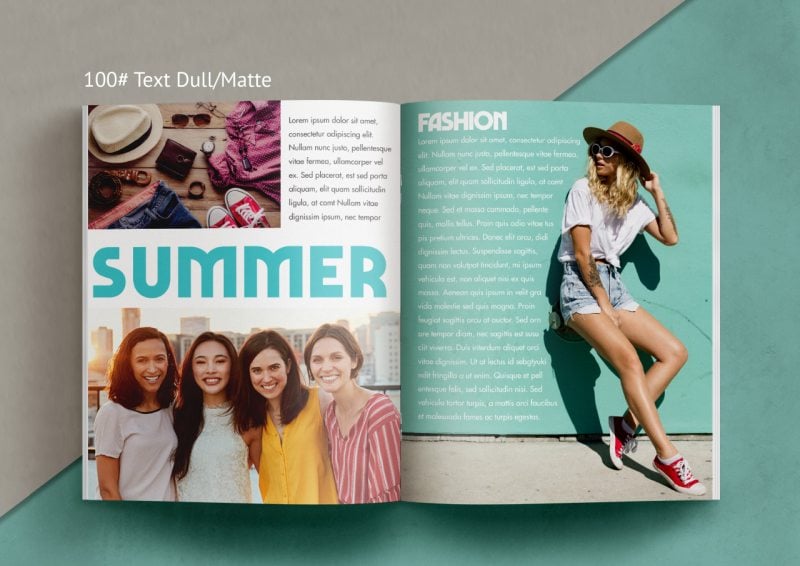
• 100# Cover Gloss Coated 2 Sides:
This stock is thicker than our 80#. It’s one of the most popular choices in paper as it offers a glossy coating that helps images pop and it’s smooth surface helps create some of the best color consistency in printing. It offers a strong reflection without having to add a UV coating.
○ Common Uses:
- Booklets
- Bookmarks
- Bottle Hangers
- Brochures
- Buckslips
- Bulk Posters
- Business Cards
- Catalogs
- Club Flyers
- Door Hangers
- Flyers
- Hang Tags
- Holiday Cards
- Invitations
- Menus
- Postcards
- Response Cards
- Rip Cards
- Rip Hangers
- Sell Sheets
- Table Tents
- Thank You Cards
- Tickets
• 120# Cover Textured Uncoated:
This paper stock is the thickness of a standard business card. It is a substantial paper with a smooth, non-shiny coating. This allows for detailed, crisp printing without sacrificing the ability to easily write on the paper.
○ Common Uses:
- Appointment Cards
- Bookmarks
- Business Cards
- Hang Tags
- Invitations
- Postcards
- Thank You Cards
• 10pt Cover Coated 1 Side:
Coated on one side, this stock offers great printability and bright, beautiful and vivid colors.
○ Common Uses:
- Appointment Cards
- Booklets
- Bottle Hangers
- Brochures
- Buckslips
- Bulk Posters
- Business Cards
- Catalogs
- Club Flyers
- Door Hangers
- Flyers
- Holiday Cards
- Invitations
- Menus
- Pocket Folders
- Postcards
- Response Cards
- Rip Cards
- Rip Hangers
- Sell Sheets
- Table Tents
- Thank You Cards
- Tickets
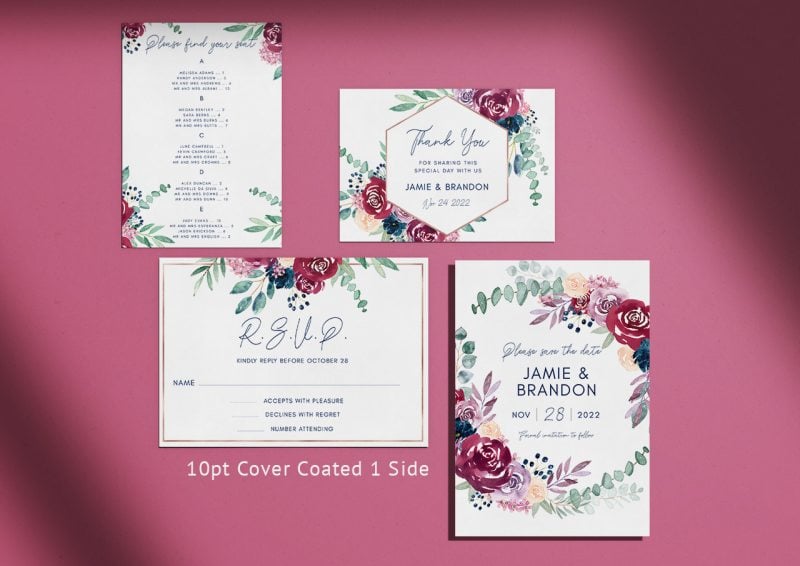
• 10pt Cover Coated 2 Sides:
Coated on both sides, this stock offers great printability and bright, beautiful and vivid colors.
○ Common Uses:
- Booklets
- Catalogs
- Pocket Folders
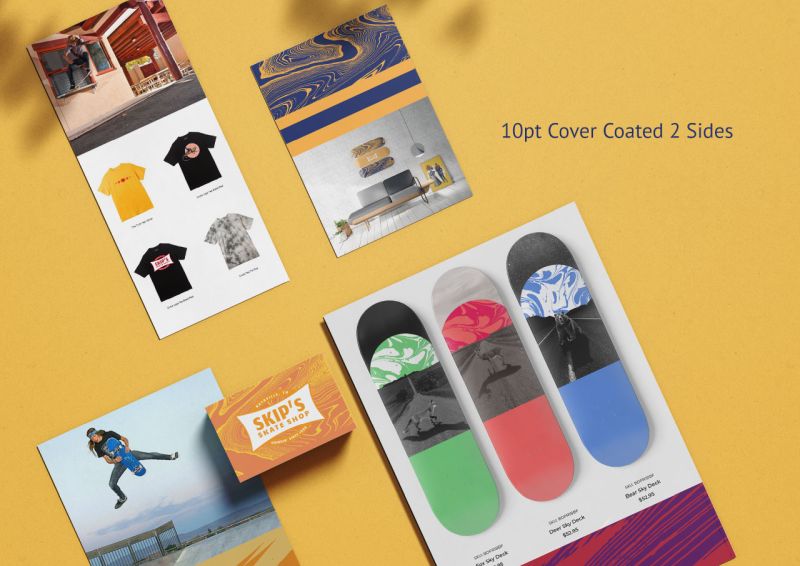
• 12pt Cover Coated 1 Side:
Coated on one side, this stock offers great printability and bright, beautiful and vivid colors.
○ Common Uses:
- Appointment Cards
- Booklets
- Bookmarks
- Bottle Hangers
- Brochures
- Bulk Posters
- Business Cards
- Catalogs
- CDs / DVDs
- Club Flyers
- Door Hangers
- Folded Cards
- Flyers
- Hang Tags
- Holiday Cards
- Invitations
- Menus
- Pocket Folders
- Postcards
- Rack Cards
- Response Cards
- Rip Cards
- Rip Hangers
- Sell Sheets
- Table Tents
- Thank You Cards
- Tickets
• 12pt Cover Coated 2 Sides:
Coated on both sides, this stock offers great printability and bright, beautiful and vivid colors.
○ Common Uses:
- Booklets
- Bookmarks
- Bottle Hangers
- Brochures
- Bulk Posters
- Business Cards
- Catalogs
- CDs / DVDs
- Club Flyers
- Door Hangers
- Flyers
- Folded Cards
- Hang Tags
- Holiday Cards
- Invitations
- Menus
- Pocket Folders
- Postcards
- Rack Cards
- Response Cards
- Rip Cards
- Rip Hangers
- Sell Sheets
- Table Tents
- Thank You Cards
- Tickets
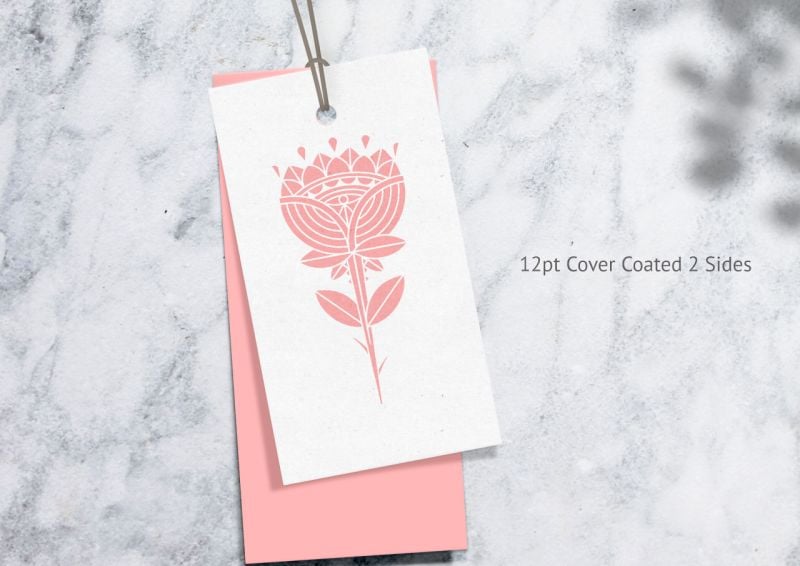
• 14pt Cover Coated 2 Sides:
Coated on both sides, this stock offers great printability and bright, beautiful and vivid colors.
○ Common Uses:
- Booklets
- Bookmarks
- Bottle Hangers
- Brochures
- Business Cards
- Bulk Posters
- Catalogs
- CDs / DVDs
- Club Flyers
- Door Hangers
- Flyers
- Folded Cards
- Hang Tags
- Holiday Cards
- Invitations
- Pocket Folders
- Postcards
- Rack Cards
- Response Cards
- Rip Cards
- Rip Hangers
- Sell Sheets
- Table Tents
- Thank You Cards
- Tickets
- Video Greeting Cards
• 14 mil Synthetic Paper (White):
This synthetic paper is tear resistant, waterproof and chemical resistant making it perfect for situations where moisture and wear-and-tear are an expected issue.
○ Common Uses:
- Flyers
- Menus
- Sell Sheets
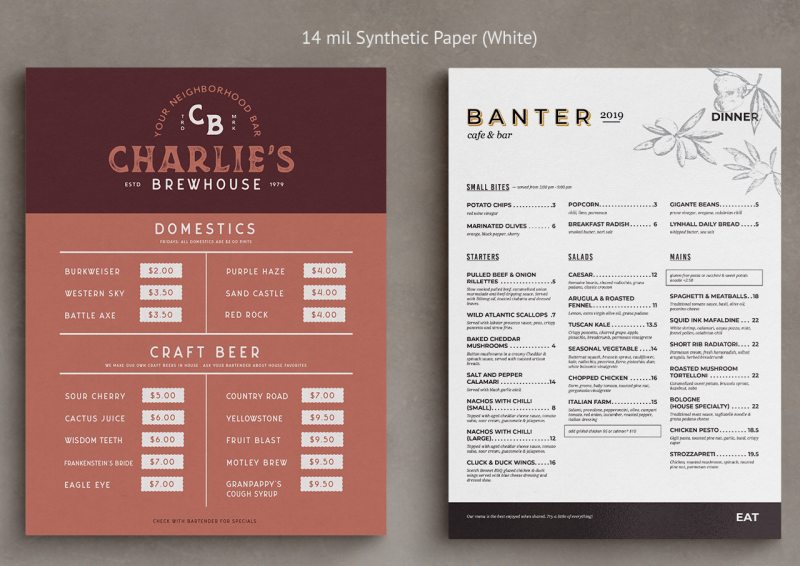
• 14pt Plastic (White):
This synthetic paper is flexible, tear resistant, waterproof and chemical resistant making it perfect for situations where moisture and wear-and-tear are an expected issue.
○ Common Uses:
- Bookmarks
- Buckslips
- Business Cards
- Club Flyers
- Door Hangers
- Hang Tags
- Menus
- Postcards
- Rack Cards
- Sell Sheets
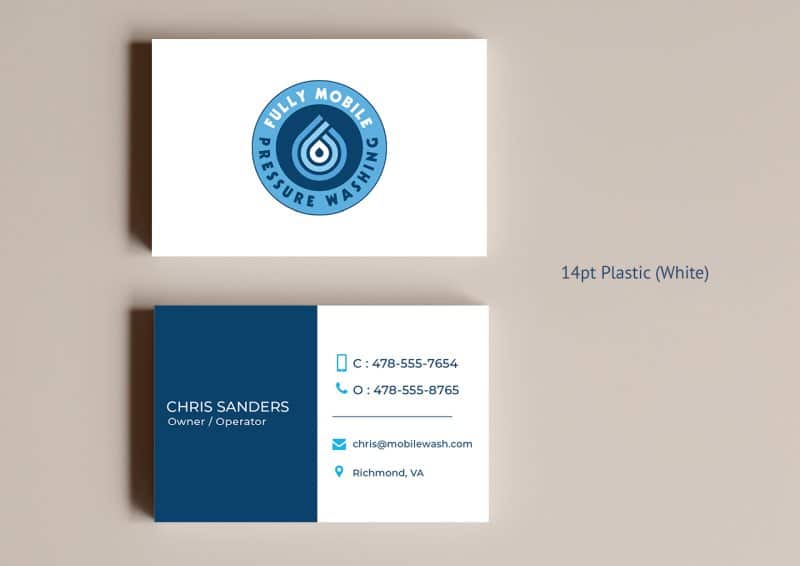
• High Quality Scrim Vinyl:
Our high-quality scrim vinyl offers a bright white finish for HD color printing and display. It is water and scratch resistant making it perfect for indoor or short-term outdoor banners.
○ Common Uses
- Vinyl Banners
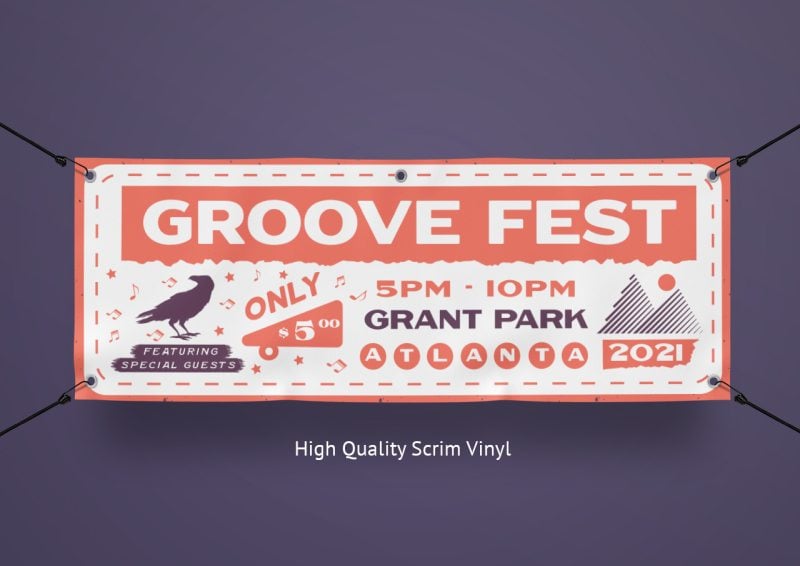
• Premium Semigloss Photo Paper:
This stock is a favorite among photographers, graphic designers and printers who need a premium semigloss photo paper to display their work. It’s resin-coated base allows for the paper to maintain the vivid, lifelike colors of the photo.
○ Common Uses:
- Large Format Posters
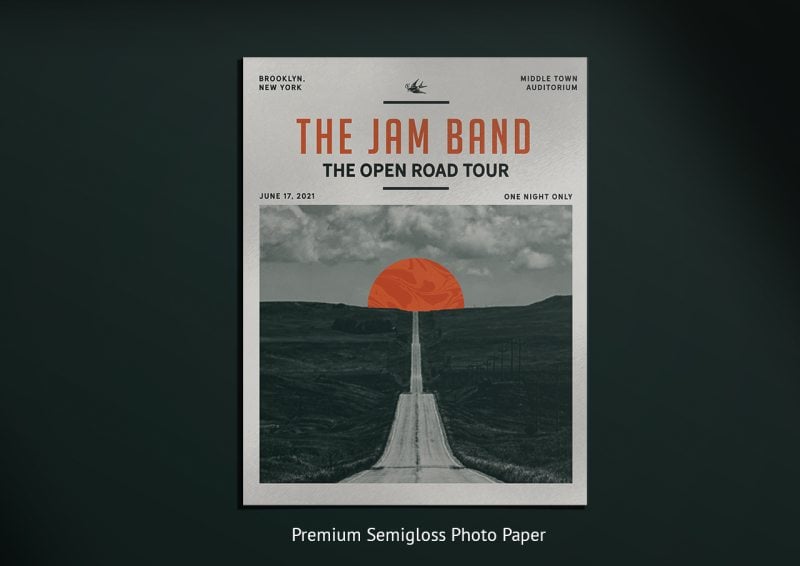
Now that you have a better idea of the ins-and-outs of the print world lingo when it comes to paper, we hope you’re feeling more comfortable and confident in your decision making. Remember to keep your type of job, audience, and paper type (whether you need more flexible or stiffer paper), and whether you want/need a coating in mind when choosing your paper. And we’re always here to answer any questions you may still have!